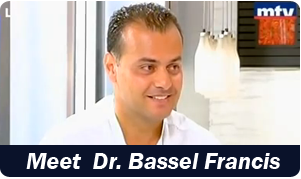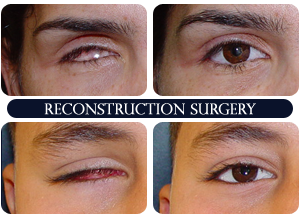Trans PRK "Hands Free Laser" New
Trans PRK is performed in two stages:Firstly, the laser is used to remove the corneas surface layer (epithelium) with pinpoint accuracy and regularity. We have found on our current laser platform that it is possible to very accurately define the transition as the laser goes through the epithelium by direct visualization in low ambient light, so we can exactly limit the ablation to within 1 micron (thereby minimizing possible stromal tissue loss).
Secondly, the laser is programmed to remove exactly the right amount of corneal stromal tissue to achieve the shape change required from the cornea to improve your vision. Following treatment a bandage contact lens is placed over the cornea for a few days as the epithelial layer heals.
Advantages of Trans PRK:
- It is a 'Hands Free Laser' procedure that makes treatment more comfortable for the patient.
- It avoids the potential for ANY flap complications during treatment. It is less invasive and there is no risk of long term or late flap complications.
- Both eyes can be treated on the same day.
- Procedure takes about 3 minutes per eye.
Surface Ablations (PRK)
Unlike LASIK, no corneal flap is created in the PRK procedure. Instead, PRK involves removing the top layer of the cornea (the epithelium) so that the laser beam can access and re-shape the cornea below the surface. The PRK procedure takes about 15 minutes per eye:- The cornea is anaesthetised.
- Anaesthetic drops are applied to the eye, and an eyelid holder is put in place to keep the eye from blinking.
- The corneal epithelium layer is removed.
- The surgeon removes the top layer of the cornea (the epithelium) in order to gain access to the corneal bed below the surface. The top layer will regenerate naturally within a few days. Unlike LASIK, no corneal flap is created in the PRK procedure.
- The corneal bed is re-shaped by the laser.
- Pulses of laser energy are then applied to re-shape the corneal bed specifically to the prescription of the eye. The laser uses a cool ultraviolet light beam to precisely ablate, or vapourise, a pre-determined amount of corneal tissue.
- A soft contact lens is applied.
- The eye is fitted with a “band-aid” soft contact lens for protection while the top layer of the cornea regenerates over the next few days. (Sometimes an eyepad is used instead of a contact lens).
- Antibiotic and anti-inflammatory eye drops are applied.
Both eyes are usually treated on the same day. )
Femto Lasik (New Technique)
Femto Lasik allows laser technology to perform significant parts of cataract and refractive lens exchange surgery. It stands for ‘safer, more accurate’ – because of the high level of precision that this new technology introduces to the procedure. Enhancing the surgeons ability to predictably perform cataract and lens replacement surgery.The Femto Lasik is a three step procedure:
- Preparation of the corneal flap using the femtosecond laser Integrated software allows the surgeon to determine the desired position and dimension of the flap.
- Correcting defective vision (with the excimer laser) The corneal flap in the first eye is now flipped open using a delicate instrument. Like with conventional LASIK, the defective vision (near-sightedness, far-sightedness and astigmatism) is now corrected by means of ablation of corneal tissue using the excimer laser.
- Repositioning of corneal flap and healing. Finally, the corneal flap is folded back into its original position. It bonds itself back into place naturally and seals the cornea like a plaster produced naturally in the body. Laser treatment of the other eye then ensues.
LASIK (Laser in Situ Keratomileusis)
The LASIK procedure takes about 15 minutes per eye:- Your cornea is anaesthetised with eye drops.
- Your surgeon administers anaesthetic eye drops, and then applies an instrument called a lid speculum to keep you from blinking.
- A corneal flap is created. The flap is comprised of a thin layer of surface corneal tissue. The flap is gently hinged back across the cornea in order to expose the corneal ‘bed’.
- The corneal bed is re-shaped. Your surgeon uses an Excimer laser to re-contour the corneal bed specifically to your specific prescription needs. The laser uses an ultraviolet light beam to precisely vaporise a pre-determined amount of tissue across the cornea.
- The corneal flap is re-positioned. No sutures are required because the eye has natural suction capacity that holds the flap secure.
- Antibiotic and anti-inflammatory eye drops are applied.
- An eye shield is applied to protect the eye while it is healing.







